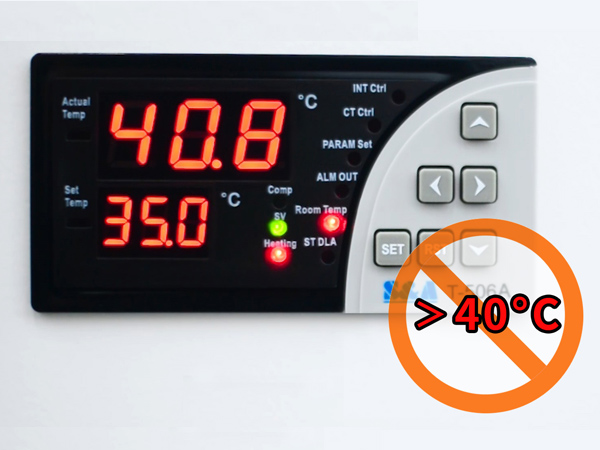Exhaust temperature is one of the critical parameters; Condensation temperature is a vital operational parameter in the refrigeration cycle; The temperature of the compressor casing and the factory temperature are critical parameters requiring special attention. These operating parameters are vital to improve efficiency and overall performance.
As a crucial cooling component for laser equipment, it's vital to pay close attention to the operating parameters of an industrial chiller to improve its efficiency and overall performance. Let's delve into some key operational parameters of industrial chillers:
1. Exhaust temperature is one of the critical parameters.
During the summer, the compressor's exhaust temperature tends to be high, requiring careful operation. If the exhaust temperature is too low, it can affect the cooling of the motor windings and accelerate the aging of insulation materials.
2. The temperature of the compressor casing is another parameter that warrants attention.
The heat generated by the electric motor and friction in the refrigeration unit can cause the copper tube casing to emit heat. Temperature differences between the top and bottom can lead to condensation on the upper compressor casing when the environmental conditions are humid at 30°C.
3. Condensation temperature is a vital operational parameter in the refrigeration cycle.
It directly affects the water chiller's cooling efficiency, power consumption, safety, and reliability. In water-cooled condensers, the condensation temperature is generally 3-5°C higher than the cooling water temperature.
4. The room temperature of the factory is another critical parameter requiring special attention.
It is advisable to maintain the room temperature within a consistent range of less than 40°C, as exceeding this threshold can lead to overloading the chiller unit, thereby impacting industrial production. The optimal operating temperature for a chiller falls within the range of 20°C to 30°C.

Specializing in laser chillers for 21 years, TEYU S&A offers over 120 models of industrial water chillers. These water chillers provide reliable cooling support for various laser equipment, including laser cutting machines, laser welding machines, laser marking machines, and laser scanning machines. TEYU S&A industrial water chillers ensure stable laser output, improved beam quality, and enhanced operational efficiency. Welcome to choose TEYU S&A Chiller, where our professional team is dedicated to providing you with superior service and user experience.
We're here for you when you need us.
Please complete the form to contact us, and we'll be happy to help you.
Copyright © 2025 TEYU S&A Chiller - All Rights Reserved.